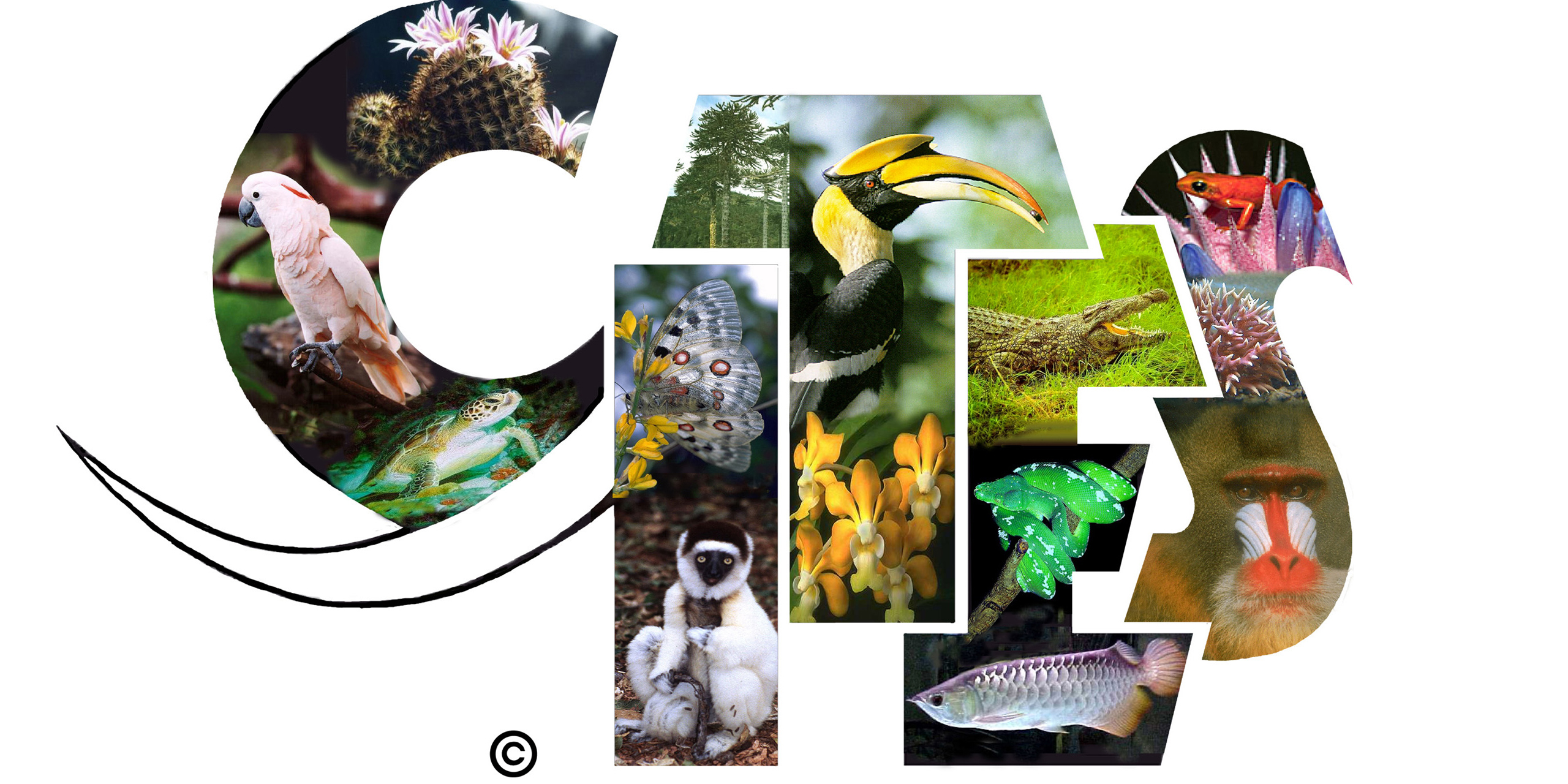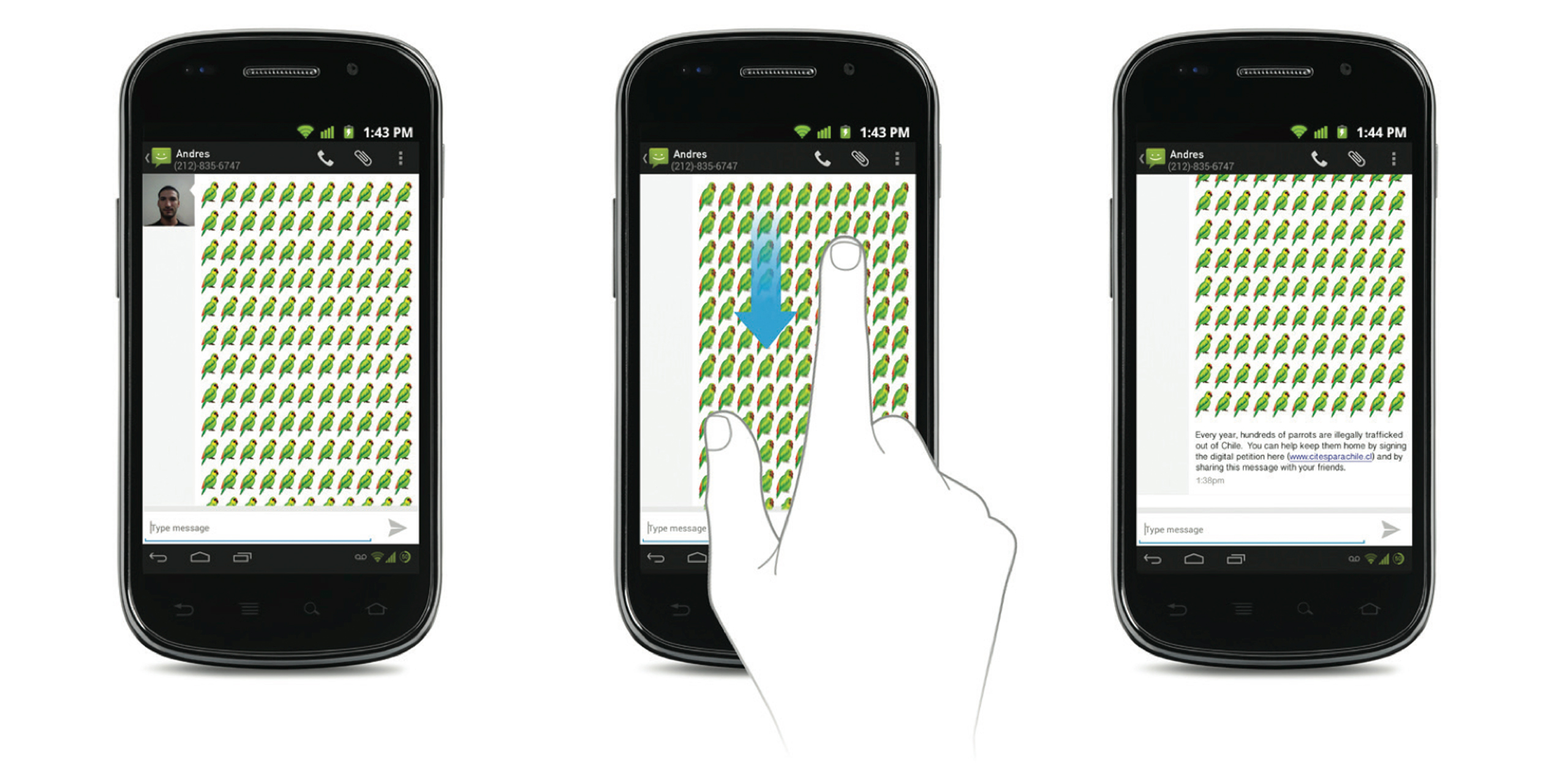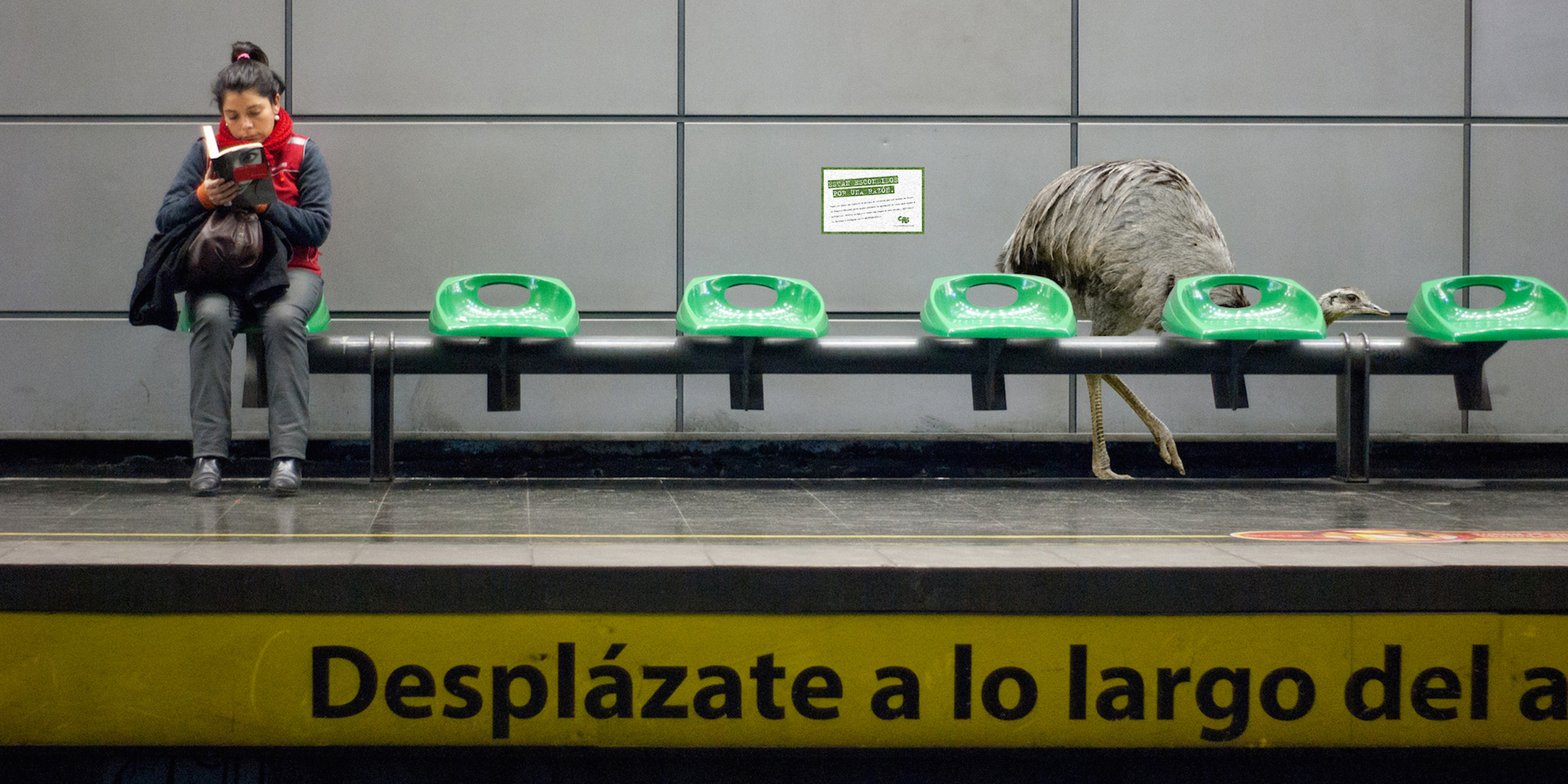CITES Project for the U.S. Department of the Interior
- Public Policy
- Sustainable Development

Summer 2014
In the Summer of 2014, faculty and students from the Advertising Department teamed up with Designmatters and the U.S. Department of the Interior Technical Assistance Program (US DOI ITAP) office in Chile to create a campaign to raise awareness on illegal trafficking of endangered species in order to catalyze public support towards a direct call to action for Chile’s policy makers to enact CITES legislation.

Recent Project Developments
Cristobal Barros, Chilean Coordinator at the (US DOI ITAP) recently updated the Designmatters Dept. on developments with the CITES Project. Campaign elements designed by Art Center students were shared with 20 decision makers in Chile from the three branches of government (Judiciary, Legislature and Executive) as well as the CITES Secretariat in Geneva and DOI-ITAP headquarters in Washington. In March of 2015, meetings will commence to discuss the details of possible project implementation. In the meantime, design elements from the campaign will be featured in a CITES traveling exhibition that will visit Valparaiso and Santiago, Chile.
Background
The Convention on International Trade in Endangered Species of Wild Fauna and Flora (CITES ) is an international agreement between governments to regulate the legal trade in wildlife in a sustainable manner, helping to ensure the protection of wild animals and plants. Signed by 80 countries in 1973, it regulates trade in approximately 35,600 species worldwide. Chile ratified CITES in 1975 and, today, more than 320 plants and animals native to Chile are listed under CITES Appendices, including the puma, Andean condor, ñandú and hammerhead shark.
Although these achievements are significant, Chile is currently classified under Category 2 by the CITES Standing Committee, meaning that its legislation does not meet all of the requirements for the full implementation of the Convention. Passing the pending legislation would bring Chile up to Category 1 status..
Sophisticated rings of criminals are involved in smuggling endangered species worldwide, similar to drug smuggling. With appropriate regulation, sanctions, investigations, and prosecutions, Chilean authorities will be able to tackle this organized crime.
4 years ago, a bill was introduced in the Chilean Congress to bring Chilean regulations up to Category 1 status. Since then, little advancement has taken place, likely due to lack of awareness of the negative impacts of wildlife trafficking and misinformation on the illegal endangered species trade.
Cristobal Barros, currently the Coordinator for the US DOI ITAP in Chile, advised on Designmatters’ Safe Agua Chile project in 2009. Recalling the outstanding work of the students on that project, he contacted Designmatters and the Advertising Department in 2014 to pose a special challenge to a new group of students: create a dynamic public awareness campaign about illegal trafficking of endangered species in Chile.
The project goal was to influence decision makers to help stop illegal animal trafficking in Chile. But, we knew that targeting the politicians wouldn’t work. They pay attention to what they believe are the top concerns of their constituents. From that insight, we knew that we needed target the people of Chile with our campaign, and create a public outcry to protect wildlife.
– Sef Chang, Advertising Student
Outcomes and Deliverables
Faculty Dennis Lee and John Battle led a team of 9 students on this independent study project over a seven-week period in June and July 2014. Over these 7 weeks, students researched Chile and its environment, cities, and cultures, focusing specifically on the cities of Santiago and Valparaiso. Students pitched a wide range of creative ideas for the campaign, utilizing clever visuals, interactive elements and surprising outdoor stunts to grab the attention of both the general public and the media. Partners from the US DOI provided thoughtful feedback in the early stages, and the students focused to fully develop the most well-received ideas.
Students presented three final campaigns to partners from US DOI, each utilizing guerilla tactics to engage different sectors of the public and encourage them to pressure politicians to enact CITES legislation.

I think that the strongest aspect of the final work was the scale and magnitude of our proposed piece. For an awareness campaign like CITES Chile, engaging as many people as possible in an interesting and memorable way was absolutely crucial to its success.
– Abe Chuang, Advertising Student
Campaign #1
Origami – Educational
This campaign starts at schools in Santiago, where every student is asked to help fold two origami endangered animals. One is for each child to take home to spread the message to his or her family and friends. The other pieces are gathered and taken to Valparaiso, where they are placed on the steps of the National Congress Building to create a haunting image expressing both the scale of illegal trafficking, as well as popular support for government action on the issue.
The Art Center students designed the original origami figures and folding instructions for Chilean endangered species the Andean condor, Chilean parrot, vicuna, puma and hammerhead shark. This project has multiple levels of engagement, from children to adults to legislators, culminating in a stunt engineered to grab the attention of the media.
Campaign #2
Emojis – Digital
Students discovered in their research that Chile has one of the highest mobile penetration rates in Latin America, and an exceptional growth rate for smartphones. To take advantage of number of Chileans with mobile phones, the students created a campaign based on emojis, sending unexpected, illustrated text messages that tell stories about how endangered species are being threatened everyday by government inaction.
Recipients of the texts see hundreds of emojis of Andean condors, Chilean parrots, vicunas, pumas, ñandús or hammerhead sharks, scrolling down to a find a message that reads “Every year, hundreds of animals are illegally trafficked out of Chile. You can help keep them home by signing the digital petition and by sharing this message with your friends”. Recipients then click on an embedded link that takes them to a digital petition asking their representatives to act quickly on CITES conservation efforts.

Campaign #3
Hiding – Installation
In this campaign, the students started with the question “What happens when animals no longer feel safe in their own homes?” The answer they came up with: “They start hiding in human cities in desperate attempts to stay alive.” This campaign is an installment of life-sized vinyl animal stickers in unexpected places throughout the Santiago Metro and Valparaiso buses to surprise and intrigue the over 2 million people who use public transportation each day in these cities. Signage invites the pubic to take and share photos on social media with the hashtag #CITESparaChile and directs them to a website with a digital petition to sign to capture public awareness and support.

We are incredibly grateful to the Art Center students for the amazing campaign they developed. When I first saw the presentation, I hooked from the very first slide and blown away by the creativity, the imagination. I thought ‘they’ve nailed it!’ Their work has benefited our project and, I truly believe, the people of Chile by raising public awareness of wildlife trafficking and the need for effective regulations. My selfish hope is that through this opportunity to work on a government-related project, these incredibly talented students consider public service. That would benefit us all!
– Christina Kish, Project Manager, U.S. Department of the Interior’s International Technical Assistance program
Next Steps
After the independent study project concluded, US DOI ITAP collaborated with the Chilean based communication strategy agency Extend to develop further copy and messaging to the campaign proposals that would further contextualize the work for Chilean audiences. The campaign concepts were presented to representatives from Chile’s CITES Committee, the US Embassy in Chile and US DOI in August 2014. The proposal was received enthusiastically by all of the representatives.
At the time of this writing, a streamlined communication and roll out plan for the campaign materials is being developed by CODEFF, a Chilean NGO dedicated preserve the environmental heritage of Chile, including the protection of wildlife, through education, citizen participation, advocacy and research. Look for updates on plans for implementation in 2015!
